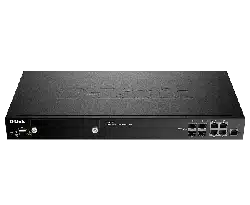Loading ...
Loading ...
Loading ...

D-Link DWC-2000 User Manual 71
Section 6 - Securing Your Network
2. Enable or disable the security options as desired (refer to the table below) and click Save.
Field Description
Not Present in OUI Database
Test
This test checks whether the MAC address of the client is from a registered
manufacturer identied in the OUI database.
Not Present in Known Client
Database Test
This test checks whether the client, which is identied by its MAC address, is listed
in the Known Client Database and is allowed access to the AP either through the
Authentication Action of Grant or through the White List global action.
If the client is in the Known Client Database and has an action of Deny, or if the
action is Global Action and it is globally set to Black List, the client fails this test.
Congured Authentication Rate
Test
This test checks whether the client has exceeded the congured rate for transmitting
802.11 authentication requests.
Congured Probe Requests
Rate Test
This test checks whether the client has exceeded the congured rate for transmitting
probe requests.
Congured De-Authentication
Requests Rate Test
This test checks whether the client has exceeded the congured rate for transmitting
de‐authentication requests.
Maximum Authentication
Failures Test
This test checks whether the client has exceeded the maximum number of failed
authentications.
Authentication with Unknown
AP Test
This test checks whether a client in the Known Client database is authenticated with
an unknown AP.
Client Threat Mitigation
Select enable to send de‐authentication messages to clients that are in the Known
Clients database but are associated with unknown APs. The Authentication with
Unknown AP Test must also be enabled in order for the mitigation to take place.
Select disable to allow clients in the Known Clients database to remain authenticated
with an unknown AP.
Known Client Database Lookup
Method
When the controller detects a client on the network it performs a lookup in the
Known Client database. Specify whether the controller should use the local or
RADIUS database for these lookups.
Known Client Database Radius
Server Name
If the known client database lookup method is RADIUS then this eld species the
RADIUS server name.
Rogue Detected Trap Interval
Specify the interval, in seconds, between transmissions of the SNMP trap telling the
administrator that rogue APs are present in the RF Scan database. If you set the
value to 0, the trap is never sent.
De-Authentication Requests
Threshold Interval
Specify the number of seconds an AP should spend counting the de‐authentication
messages sent by wireless clients.
De-Authentication Requests
Threshold Value
If the controller receives more than specied messages during the threshold interval
the test triggers.
Authentication Requests
Threshold Interval
Specify the number of seconds an AP should spend counting the authentication
messages sent by wireless clients.
Authentication Requests
Threshold Value
If the controller receives more than specied messages during the threshold interval
the test triggers.
Probe Requests Threshold
Interval
Specify the number of seconds an AP should spend counting the probe messages
sent by wireless clients.
Probe Requests Threshold Value
Specify the number of probe requests a wireless client is allowed to send during the
threshold interval before the event is reported as a threat.
Authentication Failure
Threshold Value
Specify the number of 802.1X authentication failures a client is allowed to have
before the event is reported as a threat.
Loading ...
Loading ...
Loading ...
